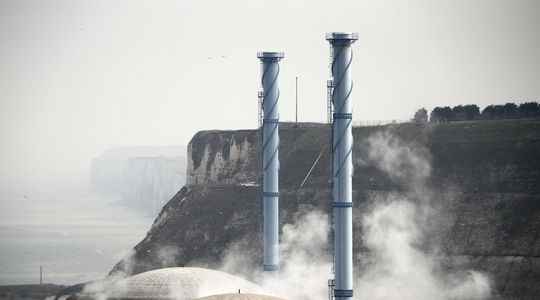Emmanuel Macron’s announcements on energy, eight days ago, could not have been clearer: France is “all-in” on nuclear power. With the aim of producing more and more carbon-free electricity over the course of the century, the Head of State has thus opted for the construction of 6 new-generation EPRs, with eight others as options. Commissioning, cost… A government reportsummary of two independent audits, and the work of the Electricity Transmission Network (RTE) on the issue, published this Friday, provides more precision on the realization of this titanic plan.
A “median” cost of 51.7 billion euros
First: how much is the project estimated? “After two external audits mandated by the State, in 2019 and then in 2021, the construction cost of a program of 3 pairs of EPR2 (i.e. 6 reactors) is estimated at €51.7 billion in the median scenario excluding the costs of financing, indicates the document. This amount would be spread over a total construction period of nearly 25 years, for an operating life of the reactors estimated by EDF at 60 years from their commissioning. And to specify: “Beyond this median scenario, a scenario integrating a degraded vision of the implementation of the project has been analyzed. It would result in an increase in the cost of the program of €4.6 billion compared to the scenario median at €51.7 billion.”
This first estimate is considered by the auditors to be “robust”, but “it is essential to continue taking into account the feedback from other EPR sites, as well as the work to consolidate and remove the risks of the project “. It remains to be seen how all this will be precisely financed. “We have discussions ahead of us, which will be led by the State, on how to organize the regulation and financing of these EPRs,” EDF CEO Jean-Bernard Lévy said on Friday.
First commissioning in 2037… in Penly?
The implementation of the first EPR of the latest generation would only take place in 2037, and not 2035 as initially envisaged by the executive. “In a central scenario, the final coupling to the network of a first EPR2 reactor is envisaged by 2037, integrating a little more than 2 years of calendar margins compared to the non-margined calendar of the project according to EDF”, is it writing.
EDF relied in particular on a construction period of 105 months, perhaps optimistic. The authors of the document compare these constructions to those of the two Taïshan EPRs, which lasted 110 months and 113 months, “in a context of particularly dynamic nuclear constructions in China”. In France, “the last reactors commissioned between 1996 and 1999 (level N4) were built in 153 months for the first (longest construction site) and 105 for the fourth (quickest construction site).”
In a report submitted last spring, the group planned to build them first in Penly (Seine-Maritime), near Dieppe, then in Gravelines (North), and finally in Bugey (Ain) or Tricastin (Drôme). “We are seizing the National Commission for Public Debate (CNDP) to open operations, public debate procedures on the Penly site, in accordance with what we have always said,” Jean-Bernard Lévy announced on Friday. The group did not delay: the Commission was in fact seized on Friday February 11, that is to say the day after the presidential announcements, specified a spokesperson.
Waste: to Cigeo
The report also addresses the issue of waste generated by this project. “The waste that would be produced by new EPR2 type reactors is similar to that already produced by the operation of the current fleet,” he notes. Concerning the fate of the most radioactive, “at this stage, no redhibitory elements have been identified for their reception in the Cigeo center“, the deep geological storage site under construction at Bure in the Meuse. However, it will be necessary to “adjust”, or even “if necessary, reinforce or supplement with larger-scale operations” the maintenance strategy for the underground structures of Cigéo, depending on the results of monitoring and the duration of operation of the site.
